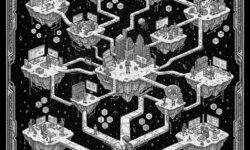
Buying a new computer looks simple until you start comparing the fine print. The chip names sound similar. Storage numbers look big but hide speed gaps. Two ports called “USB‑C” can behave nothing alike. After a few tabs, everything blurs.
This guide cuts through that blur. It starts with what you need to do, not what a spec sheet wants you to value. It explains each choice in plain language. It also flags common traps that lead to regret. By the end, you’ll know how to match the right machine to your work, your hobbies, and your budget. You’ll also know what to skip—and why.
Start With the Job, Not the Spec Sheet
Every good purchase begins with a clear job to be done. A web and office machine is not the same as a video rig. A gaming tower is different from a quiet family PC. Write two lists: what you must do on day one and what you might do in year three.
- Daily tasks: email, web, office docs, video calls, media playback.
- Creative work: photo editing, 4K video, 3D modeling, audio production.
- Gaming: modern titles at desired resolution and frame rate.
- Coding and data: compilers, containers, VMs, data science toolkits.
- Mobility needs: battery life, weight, durability, travel chargers.
- Longevity: how long you plan to keep the computer and upgrade paths.
These lists drive all other choices. If you never game, you likely don’t need a power‑hungry GPU. If you edit long videos weekly, you do. If you travel daily, weight and battery outrank raw speed. Let the job decide the hardware, not the other way around.
Choose a Form Factor First
Form factor sets constraints: size, noise, thermal headroom, upgradability, and ports. It also shapes your budget.
Laptops and 2‑in‑1s
Laptops are flexible. You pay for mobility with reduced thermal headroom. That means performance depends on how well the machine cools itself. Sleeker systems often limit sustained speed to stay quiet and cool.
- Thin‑and‑light: best for office, web, light creative work. Focus on battery, weight, and a quality display.
- Creator and gaming laptops: thicker, heavier, louder, faster. Expect higher power draw. Look at cooling design and fan behavior under load.
- 2‑in‑1: touch and pen support. Great for notes, art, and meetings. Watch hinge strength and pen latency.
Desktops
Desktops give you the most performance per dollar and the most freedom to upgrade. They are easier to cool, repair, and customize.
- Mini PCs: tiny footprint, quiet, low power. Good for office use or as a home server. Limited expansion but improving fast.
- Mid‑tower: the flexible default. Easy to add storage and a better GPU later.
- Workstations: for heavy compute and reliability. Focus on ECC memory options, more cores, and stable drivers.
- All‑in‑One: clean desk setup with a built‑in screen. Fewer cables but fewer upgrades and repairs.
Monitors for Laptops and Desktops
The monitor is half the experience. If you write, design, or code, a better screen can beat a small CPU upgrade. Consider resolution, color accuracy, brightness, and ergonomic stands. If you want high refresh for gaming, check the panel can sustain the refresh at the resolution you plan to use.
Pick an Operating System
Choose an OS that fits your software and your comfort. Switching adds friction. Staying where you are makes the learning curve shorter.
Windows
Broad software support, especially for gaming and corporate apps. Great hardware variety. You will see bloatware on some consumer models. Plan to clean it up.
macOS
Strong for creative apps, video, and audio. Long battery life on laptops with modern chips. You trade upgradability for tight integration and efficiency. Fewer GPU choices, but strong integrated options in many models.
Linux
Flexible, efficient, and excellent for developers. Check hardware compatibility and driver support. Many distributions are polished for daily use. Consider buying models certified by your preferred distro.
ChromeOS
Simple and secure for web‑first workflows. Android apps and Linux containers expand options, but heavy video or pro tools may be limited. Great for students and basic home use.
Understand CPU Basics Without Drowning in Acronyms
Modern CPUs have multiple cores. Some mix “performance” cores with “efficiency” cores. Names change, but trade‑offs remain the same: single‑thread speed helps apps that use one core at a time; many cores help rendering, compiling, and data work.
What to Look At
- Core count and threads: more helps with multitasking and heavy workloads, but only if your apps scale.
- Single‑thread speed: improves app responsiveness and light tasks. Look for recent architecture updates, not just high boost numbers.
- Power range: a CPU can run at different power limits. Laptops often cap power to keep cool. The same chip can perform very differently across models.
- Cache size: more cache can boost gaming and certain compute tasks.
When to Favor Cores vs. Speed
- General use and office: prioritize efficiency and snappy single‑thread behavior. 8–10 efficient cores in modern designs can feel great.
- Developers and creators: choose more cores if you compile or render often. Watch for thermals to actually sustain the speed.
- Gaming: balance high single‑thread speed with at least 6–8 strong cores.
Architecture Choices
There are two dominant instruction sets in personal computers. x86 chips power most Windows desktops and gaming laptops. ARM‑based chips power many efficient laptops and tablets. Both can be fast. The difference is in power use and software support. If your core tools run natively on an ARM laptop you like, you may get long battery life and low fan noise. If you need niche Windows apps or high‑end GPUs, x86 desktops and many Windows laptops offer the widest choice.
GPU: Integrated vs. Discrete, and How Much VRAM
The GPU renders graphics. It also accelerates parts of creative apps and some data tasks. Not everyone needs a dedicated GPU. Many integrated GPUs are now strong enough for light photo editing and casual games.
Who Needs a Discrete GPU
- Gamers: yes, if you want high settings or high refresh rates.
- Video editors: yes, for faster playback, effects, and rendering in many NLEs.
- 3D artists and CAD users: yes, the right drivers matter too.
- Machine learning hobbyists: yes, frameworks often expect a capable GPU with enough VRAM.
VRAM and Thermal Design
Video memory (VRAM) holds textures and data for rendering. Too little VRAM forces swapping and stutters. For 1080p gaming, 8 GB is often fine today; for 1440p or heavy mods, consider more. In laptops, GPU performance depends on the power limit and cooling of the chassis. The same model GPU can run faster or slower depending on the design. Check reviews of the exact configuration.
Memory: Capacity, Channels, and Upgrades
RAM keeps your active tasks quick. When it runs out, the system writes to storage and slows down.
Capacity Targets
- Basic use: 8–16 GB. Today, 16 GB is the safer floor for comfort.
- Creators, developers, multitaskers: 32 GB is a sweet spot. Heavy video or large datasets may want 64 GB or more.
Speed and Channels
Dual‑channel memory doubles bandwidth versus single channel. Avoid systems with a single 8 GB stick if you can run 2 × 8 GB instead. DDR5 offers higher bandwidth but also higher latency. In many tasks, capacity and dual channel matter more than peak frequency on paper.
Soldered vs. Replaceable
Some laptops have soldered RAM. That saves space but kills upgrades. If you want to extend lifespan cheaply, look for SO‑DIMM slots and a clear upgrade guide. On desktops, choose a board with the number of slots you need for future growth.
Storage: More Than Just a Big Number
Storage comes in different types and speeds. The fastest consumer option is NVMe SSD storage on a PCIe bus. SATA SSDs are cheaper but slower. eMMC is for very low‑cost devices and feels slow for most users.
Capacity Planning
- Basic use: 256–512 GB can work if you keep data in the cloud and media small.
- Comfortable default: 1 TB for most people today.
- Creators and gamers: 2 TB or more, or multiple drives for project/media separation.
Performance and Endurance
Not all NVMe SSDs are equal. Check the controller, sustained write speed, and whether the drive uses a DRAM cache. DRAM‑less drives can be fine for light use but slow during heavy writes. Endurance is measured in TBW (terabytes written). Higher TBW suggests better durability for write‑heavy workflows. Keep 10–20% free space to maintain speed.
Upgradability
On desktops, consider two NVMe slots minimum. On laptops, check if the M.2 slot is standard length and if there’s a second slot. Many thin laptops have only one slot or soldered storage. External SSDs over USB‑C can help, but internal is cleaner and faster.
Displays: Your Window to the Work
A good display reduces eye strain and helps you do better work. It matters far more than people think.
Resolution, Size, and Scaling
On laptops, 13–14 inches balances portability and comfort. 15–16 inches gives more space and often more power. A 1080p panel is fine at 13–14 inches. At 15 inches and above, 1440p or 4K gives sharper text but uses more power. On desktops, 27 inches at 1440p is a common sweet spot. Ultrawides help timelines and spreadsheets.
Panel Type
- IPS: dependable color and viewing angles. Good default choice.
- OLED: perfect blacks and high contrast. Watch for potential burn‑in and higher power use at bright settings.
- Mini‑LED: bright with decent contrast control. Great for HDR if tuned well.
Color and Brightness
For creative work, look for high coverage of sRGB or DCI‑P3, factory calibration, and uniformity. For office use, 300–400 nits is plenty indoors. If you work in bright rooms or outside, aim higher.
Refresh Rate
High refresh (120–240 Hz) makes motion smooth. Gamers love it. It also helps scrolling and pen input feel natural. But it can cut battery life if left on all the time.
Ports and Connectivity: Where People Get Tripped Up
Ports carry data, power, video, and storage. Labels are confusing, so check details.
USB, USB‑C, and USB4
USB‑C is the connector shape, not the capability. A port can be USB‑C and still be slow. USB4 can carry high‑speed data, video, and charging, often matching Thunderbolt features. Not all USB‑C ports support charging or video out. Look for the specs, not the icon.
Thunderbolt
Thunderbolt offers fast data and flexible docking on supporting machines. Great for external drives, 4K displays, and single‑cable desks. Check cable quality too; cheap cables may limit speed.
Video Outputs
HDMI and DisplayPort are the main standards. Version numbers matter for 4K at high refresh or HDR. On laptops, the video may route through the integrated GPU, which can limit features. Dedicated outputs from the discrete GPU are best for high‑end monitors.
Network
Wi‑Fi 6 or better is the baseline. Wi‑Fi 6E and 7 can reduce congestion in busy spaces. Wired Ethernet is best for stability and low latency. A 2.5 GbE port offers faster local backups and NAS access. If you rely on video calls, a reliable connection matters more than a tiny CPU gain.
Battery, Power, and Thermals
Battery life depends on chip efficiency, screen brightness, and your apps. A large battery helps, but so does good software tuning.
Battery Specs
- Capacity: measured in watt‑hours (Wh). More Wh, more runtime, all else equal.
- Charging: USB‑C PD chargers are convenient. Check the wattage; under‑powered chargers slow performance while plugged in.
- Cycle life: batteries wear out. Being able to replace one extends the machine’s life.
Thermals and Noise
Good cooling keeps performance steady and fans quiet. Thin machines can boost briefly and then slow down. Look for reviews with sustained load tests, not just short benchmarks. If silence matters, find models with larger fans, vapor chambers, or fanless designs paired with efficient chips.
Build Quality, Ergonomics, and Everyday Comfort
These are not vanity points. They are the difference between loving your computer and fighting it.
Keyboard and Trackpad
Key travel, layout, and firmness matter. Try typing if you can. A good trackpad tracks smoothly, resists accidental clicks, and supports gestures well. On desktops, budget for a great external set. It will outlive the tower.
Webcam, Mics, and Speakers
1080p webcams have become common on new laptops. A better webcam and mic array can save you from carrying external gear. If you do many calls, test microphone noise handling. Tinny speakers are fatiguing; laptop speakers vary widely.
Chassis and Service
Metal builds resist flex and feel sturdy. Plastic can be fine if designed well. Check for easy access screws and a service manual. A bottom panel held by Phillips screws is a good sign. Proprietary screws add friction.
Security and Privacy Features
Security is no longer optional. It protects your work and your identity.
- Biometrics: fingerprint reader or face unlock saves time and improves hygiene on shared desks.
- TPM/Secure enclave: supports secure boot and disk encryption.
- Camera shutter: a simple switch brings peace of mind.
- Lock slot: handy for offices and shared spaces.
Software Loadout and Bloat
New machines often ship with trialware. It slows boot and clutters menus. Plan to remove it. Consider a clean install if you want a pristine system. If your vendor offers a “pure OS” option at purchase, take it.
Support, Warranty, and Total Cost
Hardware cost is not the whole story. Support, downtime, and accessories all add up.
Warranty Basics
- Standard term: one year is common. Two or three years is better for laptops used daily.
- On‑site vs. mail‑in: on‑site reduces downtime for business use.
- Accidental damage: can be worth it for travel‑heavy users. Read exclusions.
Upgrade and Repair
Desktops win for cheap upgrades. Laptops vary. A machine with two RAM slots and an M.2 bay can gain years of life with a simple upgrade. Also check availability of parts like batteries and fans. Accessible parts mean lower long‑term cost.
Performance Testing: How to Read Benchmarks
Benchmarks are useful but easy to misuse. No single number defines a machine.
- Match the test to your workload: use CPU render tests for rendering, GPU gaming tests for gaming, and mixed tests for daily tasks.
- Look at sustained results: a short spike looks good on paper but may not reflect real work.
- Compare the same config: a laptop’s power limit matters. Model‑to‑model results can vary widely.
Special Workloads: What to Prioritize
Gaming
Focus on the GPU first, then CPU. Match performance to your monitor’s resolution and refresh. Ensure enough VRAM for future titles. On laptop, check for a MUX switch if you want the dGPU to drive the internal panel for the best frames.
Photo and Video
Look for color‑accurate displays and reliable GPU acceleration. Fast storage makes scrubbing and exports smoother. More RAM helps with large projects. Dedicated media engines in modern chips can speed up H.264/H.265/AV1 workflows.
Development
Fast single‑thread speed helps IDEs feel snappy. More cores help compiles and containers. 32 GB of RAM is a comfort target if you use multiple Docker containers or VMs. Consider Linux or WSL based on your stack. For mobile work, silent power on battery is a huge quality‑of‑life boost.
Data Science and ML
If you work locally, prioritize a GPU with enough VRAM and drivers that match your frameworks. Fast NVMe storage accelerates dataset loading. For heavy jobs, consider a desktop for thermals and upgrades, or plan a hybrid workflow with cloud resources.
Longevity, Efficiency, and Sustainability
Efficient machines run cooler, last longer on battery, and cost less to power. Replacing a battery or storage is greener than replacing a whole laptop. Choose devices with accessible parts if you value long life. Look for energy certifications and efficient idle power. Small changes like a lower‑power monitor or turning on the system’s “balanced” mode make a difference over years.
Accessibility and Comfort
Modern OSs offer robust accessibility features. Screen readers, voice control, color filters, and magnification help many users. A good external keyboard and mouse can reduce strain. Adjustable monitor arms and chairs matter as much as any CPU spec.
Buying Timing: When to Pull the Trigger
Prices swing with product cycles and sales events. New chip families typically arrive on a yearly rhythm, but not all upgrades justify waiting. If the machine you want meets your needs today, buy it. If you can wait a month for a confirmed refresh that solves a pain point—like a better screen or more RAM at the same price—that wait can be smart. Time your purchase around major sales if you are price sensitive.
Refurbished and Used: Smart Savings With Checks
Certified refurbished computers can be a great value. Look for a fresh battery rating on laptops, a real warranty, and no missing accessories. Ask about storage health if possible. On desktops, inspect for dust, bent pins, and noisy fans. For used models, prefer local pickups where you can test and verify the serial number and specs.
Pitfalls to Avoid
- Soldered 8 GB RAM on a “pro” laptop: it will feel tight in two years.
- Single‑channel memory: halves bandwidth, hurting integrated GPU performance.
- Slow storage: a SATA or DRAM‑less SSD in a “premium” machine can bottleneck heavy tasks.
- Low VRAM GPUs: fine today, limiting tomorrow.
- Misleading USB‑C labels: not all ports charge, output video, or run at full speed.
- Only one fan or tiny vents in a high‑power laptop: expect throttling and noise.
- Weak power adapter: under‑powered chargers can cap performance while plugged in.
- eMMC storage on non‑budget devices: avoid for primary systems.
- Locked bootloaders or restricted BIOS: limits upgrades and tuning.
- Short OS support window: verify updates for the life you plan to keep the device.
Data Migration and Setup
Plan your move before you buy. Back up everything. Decide whether to clone your old drive or clean install and copy data. A clean install removes years of clutter and speeds up the new system. Set up disk encryption, a password manager, and a backup solution on day one.
Backup Essentials
- 3‑2‑1 rule: three copies of your data, on two kinds of storage, with one copy off‑site.
- Automate: schedule backups so you do not forget.
- Test restores: a backup is only as good as your ability to restore it.
Peripherals: Budget for the Whole Setup
A great computer with bad peripherals is a bad setup. Budget for quality where it counts.
- Monitor: size, resolution, color accuracy, adjustable stand.
- Keyboard and mouse: pick for comfort and reliability.
- Docking: if you hot‑desk, a reliable USB‑C or Thunderbolt dock simplifies life.
- Speakers or headphones: clear audio reduces fatigue in calls and edits.
- Webcam and mic: upgrade if your laptop’s are weak.
- UPS for desktops: protects from power cuts and adds safe shutdown.
Decision Framework: How to Choose With Confidence
Step 1: Define Your “Musts” and “Nice‑to‑Haves”
Write them down. Weight, battery, ports, RAM, GPU, display—rank them.
Step 2: Pick a Form Factor and OS
Match them to your software and mobility needs. This narrows the field fast.
Step 3: Set a Budget Range
Include tax and key accessories. Leave room for a RAM or SSD upgrade if it adds value.
Step 4: Compare Shortlists by Workload
Use reviews and sustained benchmarks that reflect your tasks. Watch for thermal limits.
Step 5: Check Upgradability and Support
Look for easy RAM and SSD upgrades. Confirm warranty terms and OS support timelines.
Step 6: Buy at a Good Time, But Don’t Chase Perfection
Take advantage of sales, but remember: a good computer now beats the perfect one six months later if you need it today.
Sample Build Ideas (As Principles, Not Brand Picks)
Portable Office and School
- 13–14 inch laptop, 16 GB RAM, efficient CPU, 512 GB SSD.
- IPS display at 1080p or 1440p, 400 nits, good keyboard.
- USB‑C charging, Wi‑Fi 6 or better, 8–12 hours real battery.
Creator on the Go
- 15–16 inch laptop with a color‑accurate display.
- Fast CPU with strong media engines, 32 GB RAM, 1–2 TB SSD.
- Discrete GPU for timeline playback and render speed.
- Thunderbolt or USB4 for fast drives and docks.
Gaming Tower
- Mid‑tower case with good airflow and quiet fans.
- CPU with high single‑thread speed, GPU matched to monitor resolution.
- 32 GB RAM, 1 TB NVMe for OS and games plus 2 TB for storage.
- 650–850 W quality PSU, 2.5 GbE network, Wi‑Fi 6E optional.
Developer Desktop
- Multi‑core CPU with strong single‑thread, 32–64 GB RAM.
- Fast NVMe storage, second SSD for VMs and containers.
- Quiet cooling, dual monitors at 1440p or an ultrawide.
What “Good Value” Looks Like
It is not the cheapest sticker. It is the best fit over time. A $900 laptop with 16 GB RAM, a solid display, and 1 TB SSD may beat a $1,100 model with a flashier CPU but only 8 GB RAM and a dim panel. Think in terms of the next three to five years, not the next three months.
Questions to Ask Before You Pay
- Does this machine run my must‑have apps well today?
- What is the simplest upgrade I can make later?
- How do I back up and restore if something fails tomorrow?
- Is the display fit for my eyes and my work?
- Do the ports match my desk and travel gear?
- How long will the OS receive updates?
- What happens if I need repair next year—how long and how much?
Final Thoughts
A computer is a tool, not a trophy. Judge it by how it helps you think, make, play, and share. Emphasize balance: enough performance, a screen you like, battery or cooling that fits your life, and a path to upgrade when it matters. If you keep your eyes on the job to be done, the right choice becomes clear.
Summary:
- Start with your tasks and time horizon; let the job define the hardware.
- Pick a form factor and OS that match your software and mobility needs.
- For CPUs, balance single‑thread speed against core count; know power limits matter.
- Use a discrete GPU only if your games or creative apps benefit; size VRAM for tomorrow.
- RAM: 16 GB as a modern baseline; 32 GB for creators and heavy multitasking.
- Storage: prefer NVMe; plan 1 TB or more for comfort; watch for DRAM‑less SSDs.
- Display quality, ports, and network stability often matter more than headline CPU gains.
- Battery, thermals, and acoustics define the daily experience; check sustained performance.
- Prioritize upgradability, warranty terms, and OS support to extend lifespan.
- Avoid pitfalls like soldered minimal RAM, single‑channel memory, misleading USB‑C, and weak chargers.
- Budget for the whole setup: monitor, input devices, dock, audio, and a backup solution.
- Buy at a good time, but do not delay if your work suffers today; value is fit over years.





